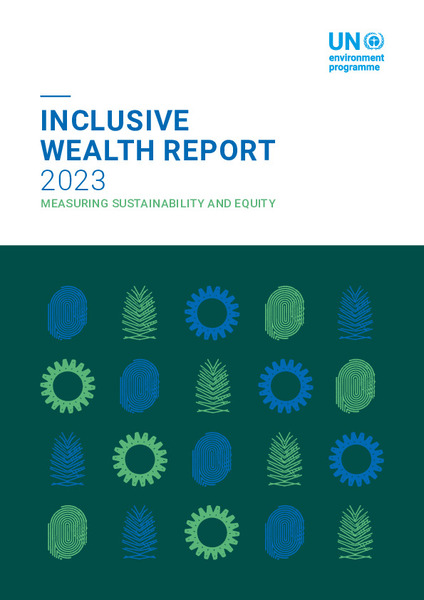| dc.contributor | North America Office | en_US |
| dc.contributor.author | United Nations Environment Programme | en_US |
| dc.date.accessioned | 2023-08-09T13:14:49Z | |
| dc.date.available | 2023-08-09T13:14:49Z | |
| dc.date.issued | 2023-08 | |
| dc.identifier.isbn | 978-92-807-4051-6 | en_US |
| dc.identifier.other | RONA/2549/DC | en_US |
| dc.identifier.uri | https://wedocs.unep.org/20.500.11822/43131 | |
| dc.description | For keeping track of sustainability of the economy and well-being of people, we need to move beyond just a flow (GDP) approach to use a stock approach to measure wealth -- one that considers the aggregate value of all capital assets-- to take our use of natural capital into account, along with human and produced capital.
This view is echoed by the United Nations Secretary General, who’s Common Agenda clearly outlines the need to move beyond GDP as the central measure of national progress. Tracking a country’s GDP over time does not tell us whether the development path being pursued is sustainable.
The IWR 2023 undertakes a comprehensive global assessment of the inclusive wealth of 163 countries for 1990–2019. The IWR 2023 adds an explicit focus on the nexus between inequalities and natural assets, highlighting that the loss of nature negatively impacts rural and poor communities in developing countries most directly and most acutely. The report highlights how inclusive wealth—incorporating natural, human and produced capital—is a sophisticated yet streamlined measure for assessing national and global development and economic progress.
The Inclusive Wealth Report 2023 is the fourth iteration of the Inclusive Wealth series. The Inclusive Wealth paradigm demonstrates that future economic possibilities depend on the current management of all forms of wealth. Focus on inclusive wealth and estimation are the building blocks for achieving the Sustainable Development Goals. The inclusive wealth index measures the wealth of nations by carrying out a comprehensive analysis of a country’s productive base including the assets from which human well-being is derived, - manufactured, human and natural capital. Thus, the IWI measures a nation’s capacity to create and maintain human well-being over time. | en_US |
| dc.format | pdf | en_US |
| dc.language | English | en_US |
| dc.publisher | United Nations Environment Programme | en_US |
| dc.rights | Public | en_US |
| dc.subject | wealth | en_US |
| dc.subject | natural capital | en_US |
| dc.subject | natural resource | en_US |
| dc.subject | social inequality | en_US |
| dc.subject | natural capital accounts | en_US |
| dc.title | Inclusive Wealth Report 2023: Measuring Sustainability and Equity | en_US |
| dc.type | Publications | en_US |
| dc.type | Institutional Series | en_US |
| wd.identifier.sdg | SDG 14 - Life below Water | en_US |
| wd.identifier.sdg | SDG 15 - Life on Land | en_US |
| wd.topics | Nature Action | en_US |
| wd.identifier.pagesnumber | 164 p. | en_US |


